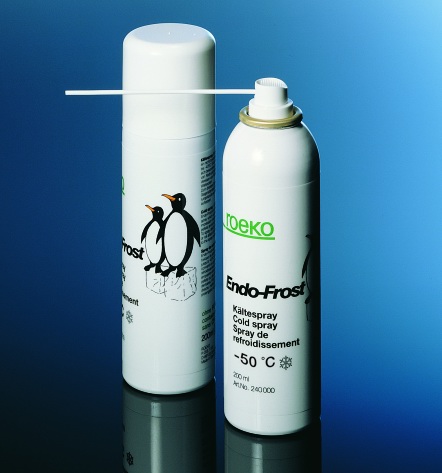Sensitivity to cold




In a cold test the cold object is placed on the crown of the tooth near the gingival margin for best performance. Several teeth must be tested for proper reference. The cold test can be performed with an ice-stick (see picture) (0oC - -10oC), ethyl chloride (-4oC), difluorodichloromethane (-50oC) or a frozen carbon dioxide (dry ice) stick (-70oC). The ice stick is not very effective, but it is probably the most widely used. Carbon dioxide has been shown to be effective even in teeth with crowns.
A negative response to cold may be an indication of pulpal necrosis but this is also influenced by other factors such as the amount of secondary dentine.